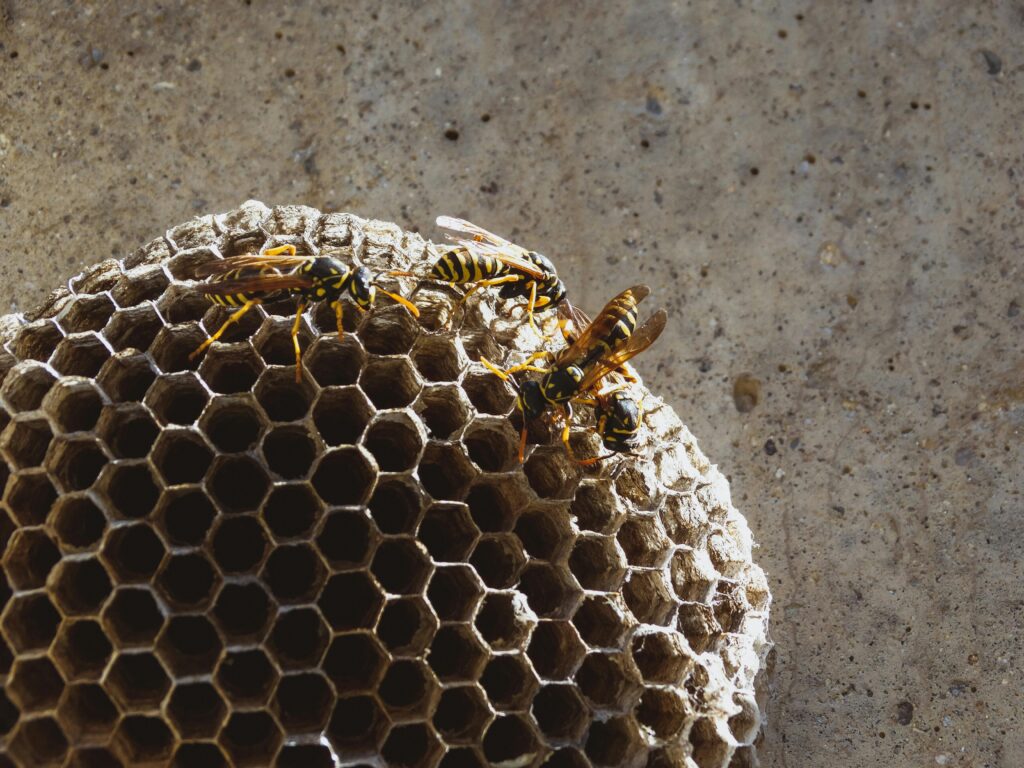
Wasps: Nature’s Needle with a Nasty Temper
Table of Contents
- Introduction
- The Anatomy of a Sting
- Why Wasps Sting – and Keep Stinging
- Do Wasps Pollinate?
- What Attracts Wasps to Homes and Gardens?
- What You Can Do
- Final Thoughts
Introduction
When summer arrives, wasps become one of the most feared pests across Oxfordshire. At Shire Pest Solutions, we receive frequent calls from residents in Didcot, Wallingford, and surrounding areas who need fast, safe wasp removal. These insects don’t just irritate—they attack with a venomous sting designed by nature for defence and aggression.
The Anatomy of a Sting
The sting of a wasp acts like a hypodermic needle. It pierces the skin and injects venom in milliseconds. Pain, swelling and—sometimes—serious allergic reactions follow. Unlike bees, which lose their barbed sting after one strike, wasps use a smooth sting. That design allows repeated attacks without harming the insect.
You won’t find a one-and-done scenario with wasps. One sting can turn into several in seconds.
Why Wasps Sting – and Keep Stinging
Wasps react aggressively when they sense a threat or competition for food. You might see them patrol gardens, hover over barbecues, or circle drinks left in the sun. When they sting, they send out a chemical signal—pheromones—to rally nearby colony members. Swatting only increases the risk. One angry wasp often turns into many.
Unlike bees, wasps don’t protect a hive passively. They engage, defend and chase.
Do Wasps Pollinate?
Yes, wasps do assist with pollination—though not as efficiently as bees. As they seek nectar, they move pollen between flowers. Some species even favour certain plants. However, they don’t collect nectar or make honey. Their ecological role includes insect control and scavenging.
They help manage pests in gardens and ecosystems, even if their sting overshadows their benefits.
What Attracts Wasps to Homes and Gardens?
Sweet smells, sugary snacks, and protein-rich waste all draw wasps. You’ll notice more activity when summer peaks in places like Didcot, Wantage, or Abingdon. Gardens, bins and compost heaps quickly become hotspots.
Common Wasp Attractants Include:
- Open cans or bottles with sugary drinks
- Overripe fruit—especially plums, pears and apples
- Pet food left outdoors
- Jam, juice, or syrup on outdoor plates and surfaces
- Rotten wood—used by some species to build nests
In areas like Didcot and Wallingford, homes near orchards or fields often see increased wasp activity.
What You Can Do
Follow these simple steps to deter wasps:
- Seal bins tightly and clean food waste regularly
- Clear fallen fruit from lawns and gardens
- Inspect and seal entry points in sheds, lofts, eaves, and vents
- Avoid strong scents, including perfumes or fragranced lotions
- Keep food and drink covered during outdoor meals
- Stay calm—do not swat at wasps as this provokes further aggression
If you spot a nest, don’t approach it. Some nests house thousands of wasps, and disturbing them without the right gear puts you at risk. Our trained technicians handle safe wasp removal using approved safety procedures.
Want more prevention advice? Visit our Blog for seasonal pest control guides and tips tailored for Oxfordshire homes.
Final Thoughts
Wasps might bring tension to your summer afternoons, but they also serve a purpose. They control other insect populations and support pollination to a minor degree. However, when they settle too close to your home or business, you must act fast.
At Shire Pest Solutions, we remove wasp nests throughout Oxfordshire using fast, safe, and humane methods. We’ve protected homes and gardens across Didcot, Wallingford and beyond from painful stings and aggressive swarms.
Take control this summer. Don’t let wasps take over your space. Call in the professionals and let us handle the sting.
